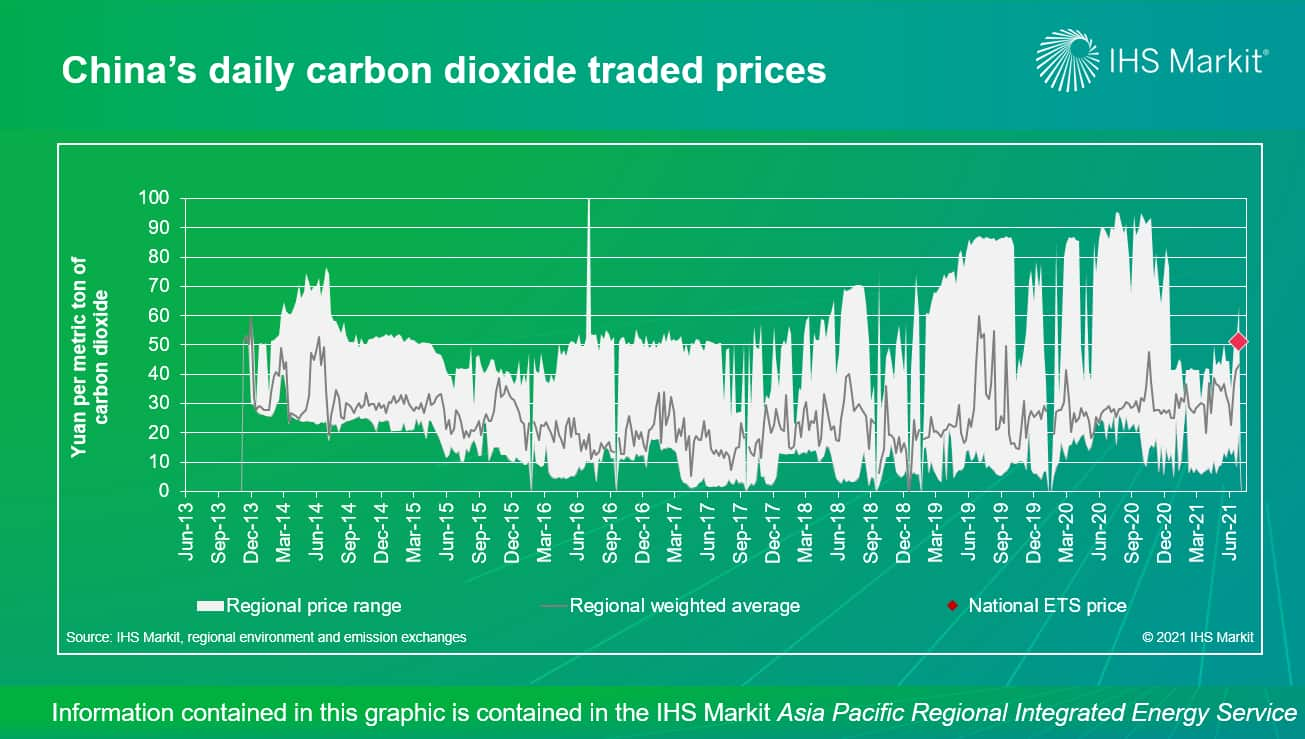China’s national carbon market officially opened trading
On 16 July 2021, China's national carbon market or emission trading scheme (ETS) started trading at the Shanghai Environment and Energy Exchange. The trading inauguration of the world's largest carbon market with over 4 billion metric tons of carbon emissions each year in its first phase marks an important milestone of a market-based tool to help China address its carbon emissions issue.

On the first trading day of the national ETS, the price of the China Emission Allowance (CEA) opened at 48.00 yuan per metric ton and closed at 52.80 yuan per metric ton, reaching the 10% ceiling of the intraday limit up. The average traded price was 51.23 yuan per metric ton ($7.89 per metric ton), higher than the weighted average allowance trading price in the regional ETS markets on the same day of 41.66 yuan per metric ton and 32.60 yuan per metric ton during the first half of 2021. The total transacted volume and value reached 4.1 million metric tons and 210.2 million yuan ($32.4 million). In comparison, the regional markets only exchanged 128.3 thousand metric tons and 3.8 million yuan of emission allowance on average on their first day of trading. It is uncertain whether the CEA price will retain the premium to the regional emission allowance as the first day of trading at the national ETS could be more symbolic than being driven by the market.
China's national ETS currently only allows the covered emitters—thermal power plants—to trade the allowance. Ten power generation and energy companies traded their allowance on the first trading day. Financial institutions and persons are excluded from current trading but may be allowed in the future. Key emitters from non-power sectors, such as cement, nonferrous metal, petrochemical, and steel industries, already trading carbon emissions in the regional trading markets will also be gradually added to the national trading market, but no specific timeline has been announced.
Capacity building and market rules remain a focus in the near term. Policies on emission compliance and trading details for 2021 are pending. In April 2019, the Ministry of Ecology and Environment started to collect public opinions on the Interim Regulations on the Carbon Emission Trading Management (the Regulations). If approved, the Regulations will elevate the legislation level of emission trading management rules from a ministry-level administrative measure to law and the penalty ceiling for noncompliance from 30,000 yuan to 10,000,000 yuan, bringing compliance motivation to a whole new level.
Learn more about our coverage of the APAC energy market through our APAC Regional Integrated Service, https://ihsmarkit.com/products/asia-pacific-regional-integrated.html.
This article was published by S&P Global Commodity Insights and not by S&P Global Ratings, which is a separately managed division of S&P Global.

